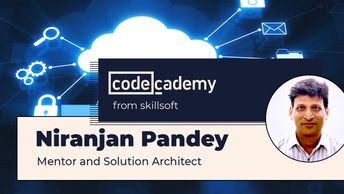When managing a hybrid cloud environment, applying DevOps principles can aid with deployment complexity, legacy app modernization, and Agile and CI/CD process implementation. In this course, you'll learn how to enable DevOps in a hybrid cloud environment, recognizing the associated challenges, the role of containerization and DevOps deployment strategies, and the implementation process of CI/CD. You'll then examine the challenges, best practices, and tools for monitoring hybrid clouds.
You'll also recognize the workload combination used to build hybrid architectures, the tools used to design conceptual architecture and set up CI/CD mechanisms, and the benefits of hybrid CI/CD. You'll set up and configure hybrid cloud connectivity between AWS and on-premises environments, CI/CD processes for hybrid environments using Jenkins with Docker, and monitoring tools to monitor solutions deployed in hybrid environments.
| Objectives |
|---|
Hybrid Environment Pipelines: DevOps Practices for Hybrid Environments
|


